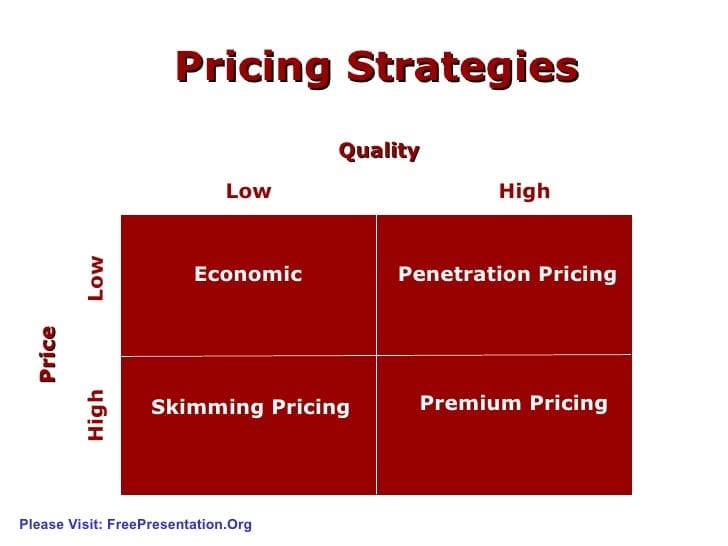Exactly How a Solid Pricing Strategy Can Boost Consumer Commitment and Retention
Exactly How a Solid Pricing Strategy Can Boost Consumer Commitment and Retention
Blog Article

Master Effective Pricing Approaches to Make Best Use Of Profit
In the ever-evolving landscape of commerce, mastering effective prices strategies is vital for organizations aiming to make best use of profit. A nuanced understanding of prices psychology can substantially affect consumer behavior and getting decisions.
Comprehending Pricing Psychology
Comprehending pricing psychology is important for businesses aiming to maximize their pricing strategies. This area takes a look at just how consumers regard rates and just how these perceptions influence their investing in choices. Secret principles in rates psychology include the anchoring effect, where the preliminary cost offered acts as a referral point for consumers, and the concept of price level of sensitivity, which varies amongst different consumer segments.
Additionally, services can utilize the concept of viewed value, where the perceived benefits of a service or product can validate a higher cost factor. As an example, premium pricing can create an aura of exclusivity, bring in consumers who associate higher rates with remarkable top quality. On the various other hand, mental prices, such as establishing a cost at $9.99 rather than $10, can substantially impact consumer behavior by making prices show up extra attractive.
Moreover, deficiency and necessity can enhance the perceived value of items, prompting quicker purchasing choices. Understanding these mental triggers enables organizations to formulate pricing strategies that not just drive sales yet additionally foster consumer commitment. Thus, grasping rates psychology is crucial for reliable rates strategy solution, leading to enhanced success and market positioning.
Implementing Value-Based Prices

Next, section your clients based on their willingness to pay and the value they regard. By doing so, you can customize offerings and prices methods to straighten with various sectors.
Constantly keep an eye on market problems and consumer responses to fine-tune your rates approach over time. By executing value-based rates, services can boost productivity while promoting lasting consumer loyalty.
Exploring Dynamic Prices Designs
In today's quickly changing market landscape, dynamic prices designs have actually become an effective method for companies looking for to optimize profits and react to changes in demand. These designs allow business to change their costs in real-time based on different variables such as customer actions, market patterns, and inventory levels. By leveraging data analytics and formulas, businesses can recognize optimal prices factors that maximize sales while continuing to be affordable.
Dynamic prices can take different forms, consisting of time-based pricing, where prices fluctuate based upon time of day or season, and demand-based prices, which changes costs according to current customer need. This adaptability not only improves success yet likewise improves consumer contentment by offering rates that show real-time market problems.
Executing vibrant prices calls for a robust technical infrastructure and a deep understanding of client sectors. Transparent communication concerning pricing changes can help mitigate consumer dissatisfaction and foster count on, ultimately leading to continual earnings in a competitive industry.
Studying Competitor Prices
Keeping track of rival pricing is important for businesses intending to maintain an affordable edge in their respective markets. By assessing rivals' prices strategies, companies can recognize market patterns, comprehend consumer choices, and adjust their prices as necessary. This analysis includes gathering information on rivals' prices, marketing methods, and product offerings to inform rates choices.
To successfully examine rival pricing, businesses must use various devices and methods, such as cost monitoring software application, marketing research reports, and consumer comments. This data can expose just how competitors position their services and products, permitting organizations to separate their offerings or adopt comparable techniques to stay appropriate.
Additionally, it is essential to categorize competitors right into direct and indirect competitors. Straight competitors offer comparable service or products, while indirect rivals may satisfy the same customer demand these details with various solutions. Understanding the nuances between these groups will allow businesses to tailor their rates techniques better.
Ultimately, continuous competitor rates evaluation is essential for making enlightened rates choices. It allows businesses to continue to be active in reaction to market shifts, ensuring they can confiscate chances and alleviate threats related to pricing strategies.
Assessing Prices Performance
Recognizing just how competitor rates affects market dynamics leads to an all-natural concentrate on reviewing prices performance within one's very own organization. This examination is critical for determining areas of strength and possibilities for renovation, eventually improving earnings.

In addition, performing routine prices audits can reveal discrepancies between expected and real performance. This entails comparing pricing information throughout various segments and networks to comprehend differences and recognize fads. Moreover, integrating customer responses can provide understandings right into perceived worth versus real prices, guaranteeing alignment with market assumptions.
Last but not least, leveraging data analytics tools can assist in deeper understandings into pricing performance, enabling companies to make data-driven changes (Pricing Strategy). By constantly evaluating rates efficiency, companies can adapt to market modifications and optimize their strategies, making certain continual profitability in a competitive landscape
Verdict
By leveraging rates psychology, companies can enhance viewed value and tailor rates to diverse customer sectors. The fostering of dynamic and value-based rates models assists in real-time changes based on need and client determination to pay.
Comprehending pricing psychology is critical for services intending to maximize their rates approaches. Understanding these mental triggers makes it possible for services to formulate prices approaches hop over to these guys that not only drive sales yet likewise foster client loyalty. Therefore, grasping rates psychology is vital for reliable rates strategy formula, leading to boosted earnings and market positioning.
By assessing competitors' pricing strategies, business can determine market patterns, understand consumer choices, and change their pricing appropriately. By leveraging prices psychology, organizations can pop over to this web-site improve regarded worth and dressmaker rates to diverse consumer sections.
Report this page